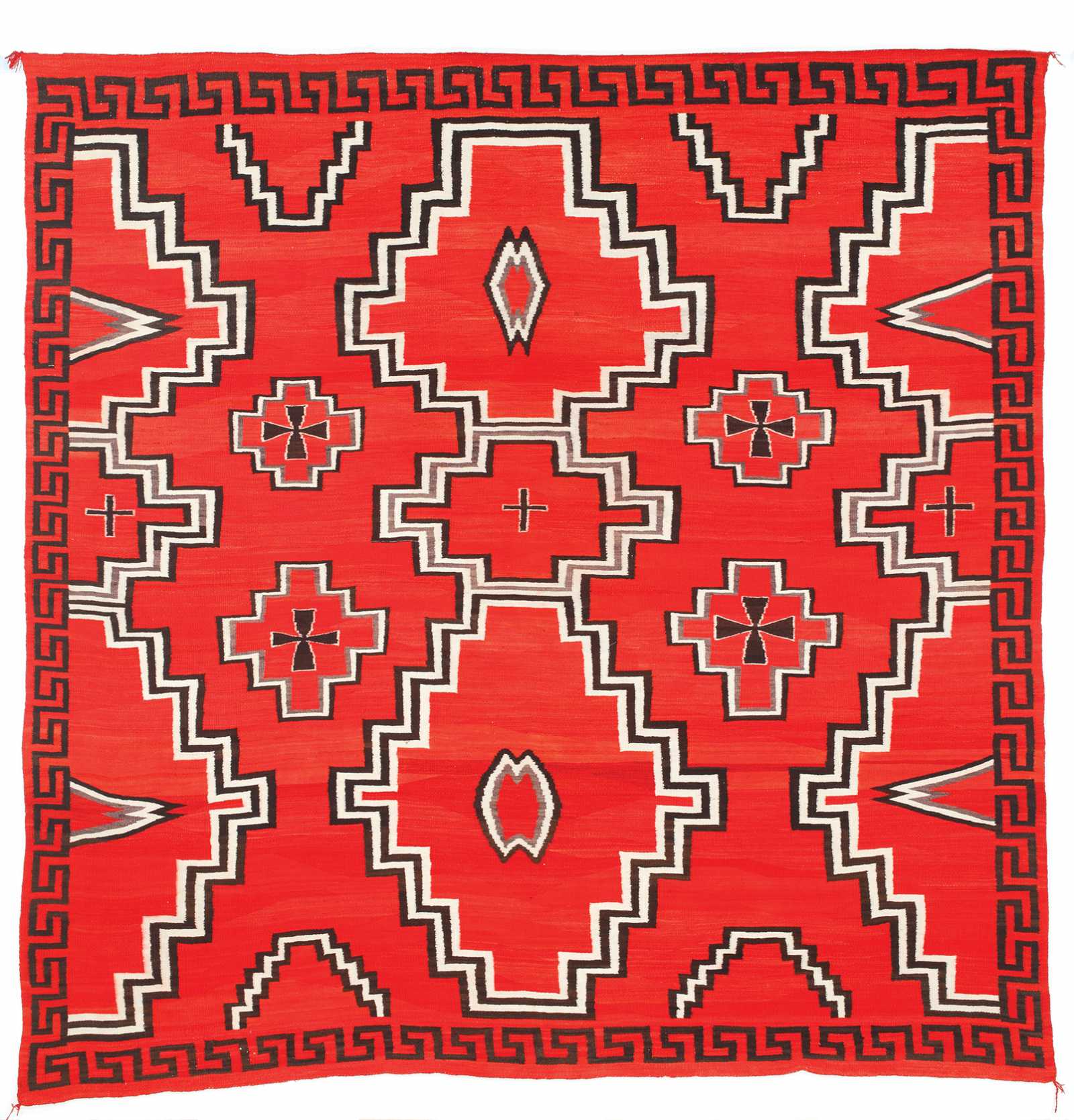Artworks of the Week
Navajo, Early Ganado Rug
Donated to Palm Springs Art Museum from the collection of western movie actor and artist George Montgomery (1916-2000), this large Ganado rug measures just over nine-and-a-half-feet square. The bold black-and-white stepped-diamond central design with half-diamonds on the sides is typical of earlier, classic blanket designs, yet the border on this weaving indicates that this textile was designed as a rug. The rhythmic patterns create a visual play between the positive and negative spaces. The hooked border, also called a Greek fret, is similar to design motifs found in ancient Pueblo textiles and pottery.
The rug’s large scale and use of a red field suggest that it originated from the Hubbell Trading Post area (now a National Historic Site) in Ganado, Arizona around 1900. John (Juan) Lorenzo Hubbell (1853-1930) established the Hubbell Trading Post in 1878. He encouraged Navajo weavers to incorporate classic period designs and to use large bold motifs such as crosses and diamonds, which were often outlined in a contrasting color and set against a brilliant red field. Through tradition, adaptation, and innovation, Navajo weaving styles have evolved from a blend of cross-cultural influences, and survived as a dynamic and expressive art form vested in tradition and new approaches.
Navajo, Early Ganado Rug, ca. 1900, natural handspun wool with synthetic dyes, 116 x 118 inches. Gift of the George Montgomery Trust, A1-2005.
Wolfgang Paalen
Wolfgang Paalen played a major role in the development of modern abstract art, especially as a member of the Parisian Surrealist movement that formed around André Breton. In 1939, Paalen fled the chaos of war-time Europe to settle in Mexico, and broke from Surrealism by creating a personal cosmic vocabulary based on a fusion of spirituality and science. There he founded the theoretical art magazine Dyn that became well known in the Americas and influenced a generation of mid-century Abstract Expressionists including Roberto Matta, Robert Motherwell, Bartlett Newman, Jackson Pollock, among many others. While visiting San Francisco in 1949, Paalen, along with Gordon Onslow Ford and Lee Mullican, formed the Dynaton group (Greek for “the possible”) to promote ideas about the artist’s role as a visionary bridge to spiritual realms.
Untitled Abstract exemplifies Paalen’s later style which moved to an “all-over” compositional approach. The intricate play of mosaic-like dabs of color attests to his concern with the nature of vision and perception. A scholar and collector of ancient and Indigenous art, Paalen looked forward to a time when we could fulfill all possibilities, or, as he put it, when past and future almost touch.
Wolfgang Paalen, (Austrian, 1907-1959), Untitled Abstract, 1946, oil on parchment paper, 23 1/3 x 15 3/8 inches. Gift of the Estate of Herbert E. Toor, 32-1989


